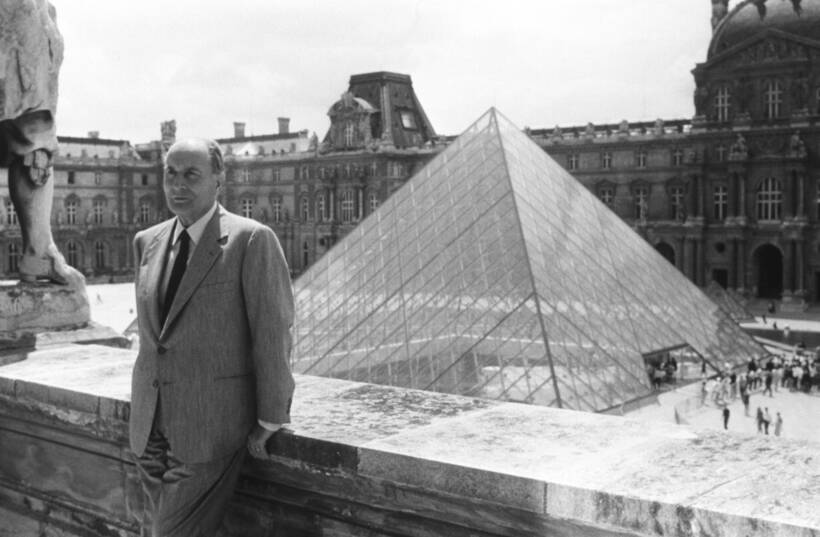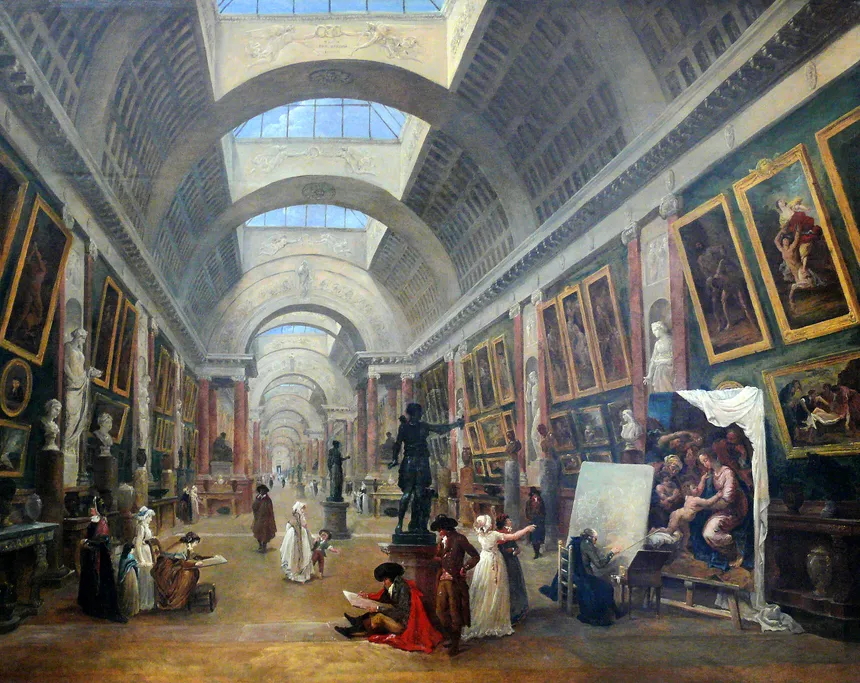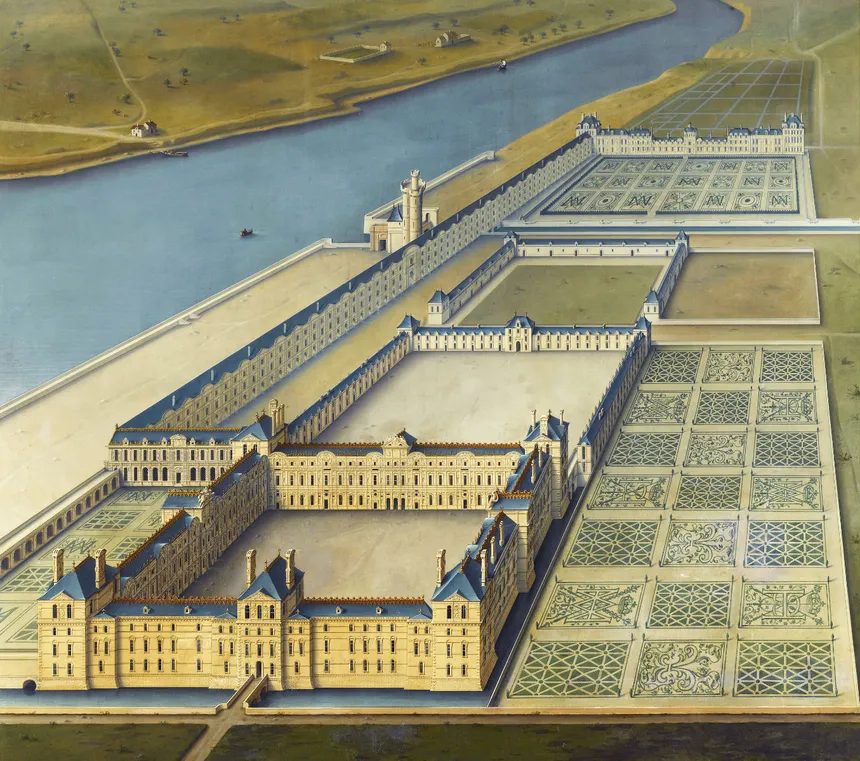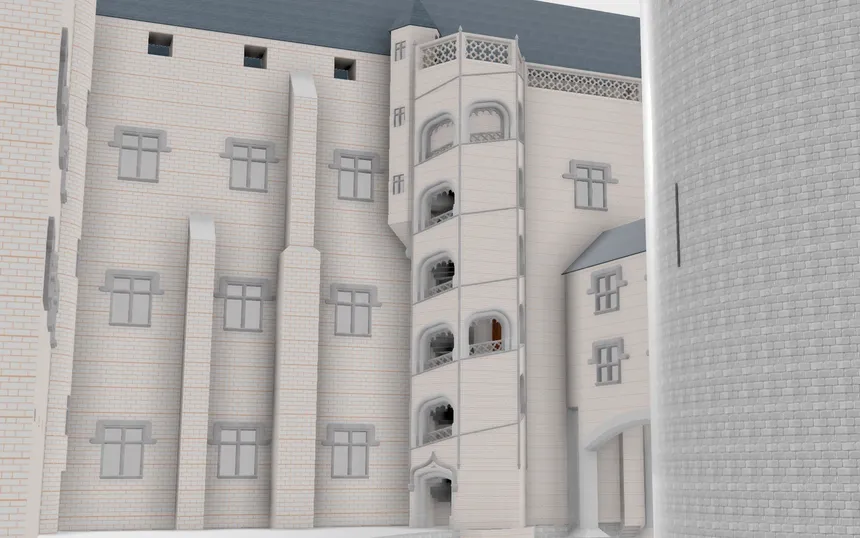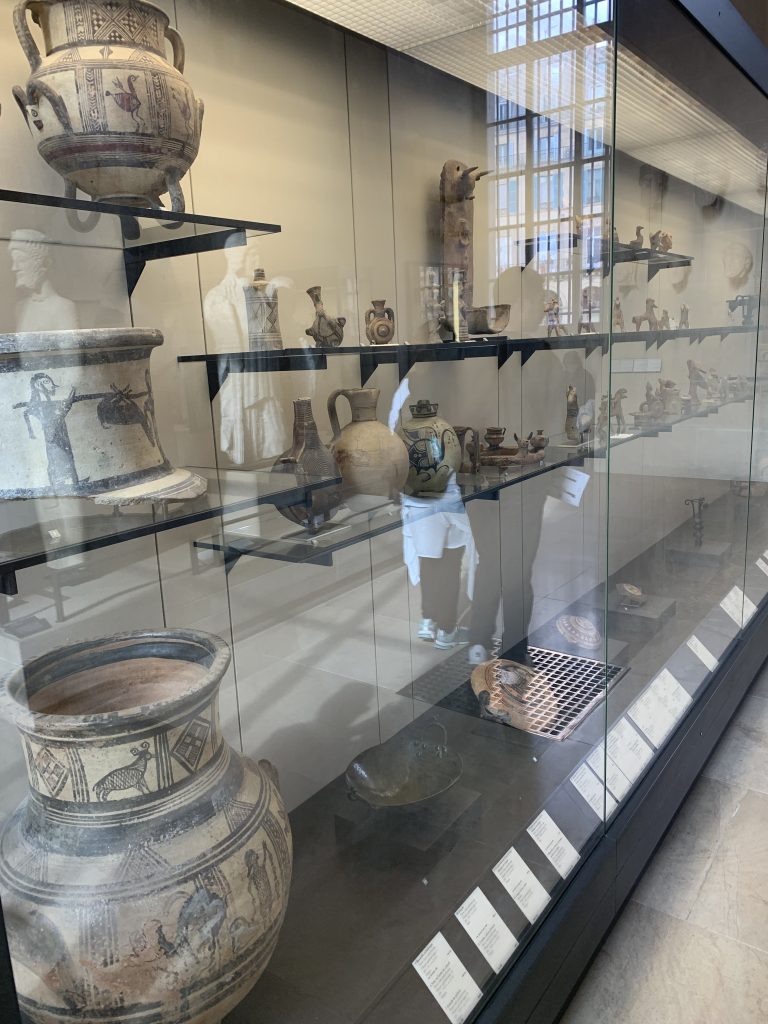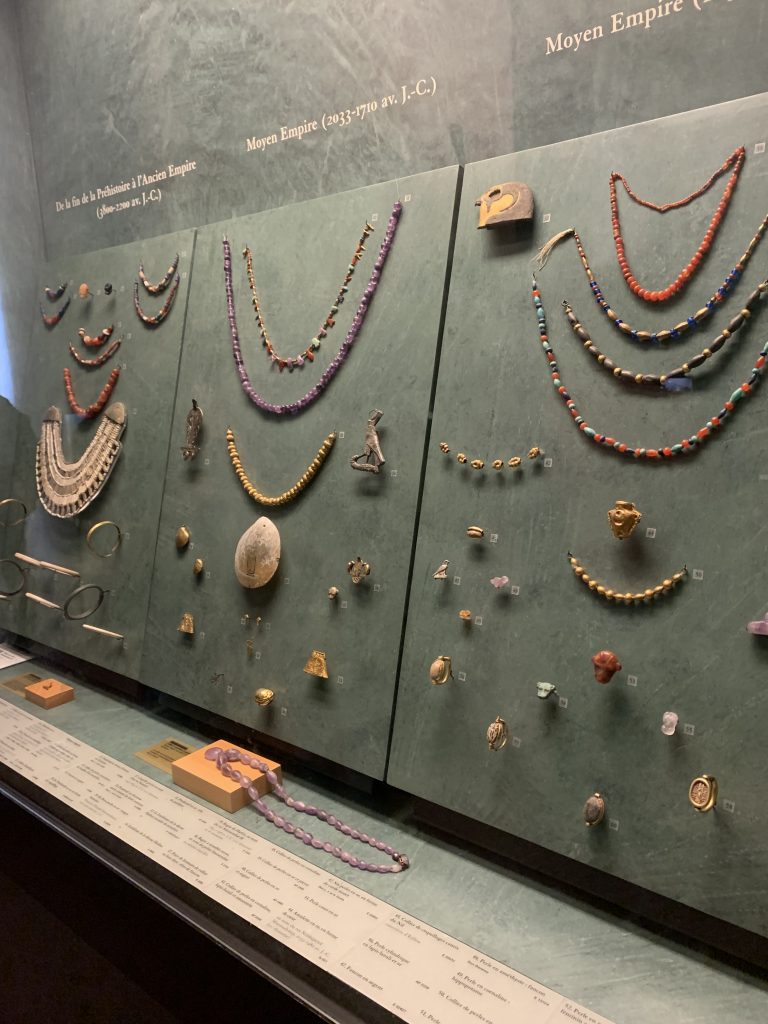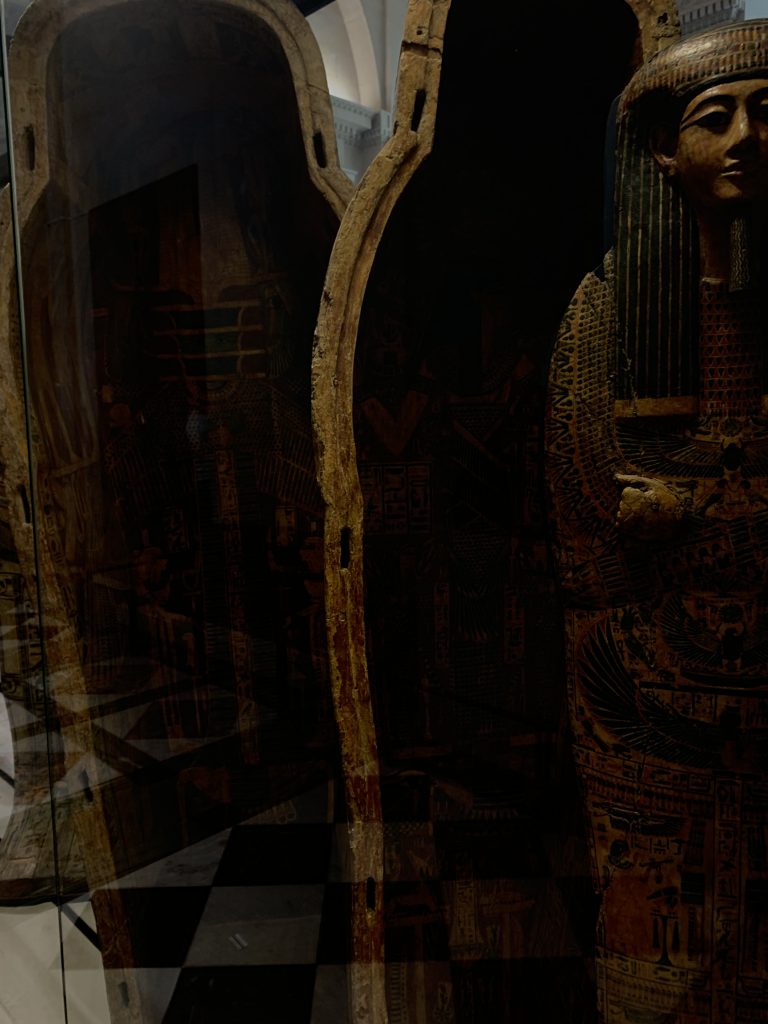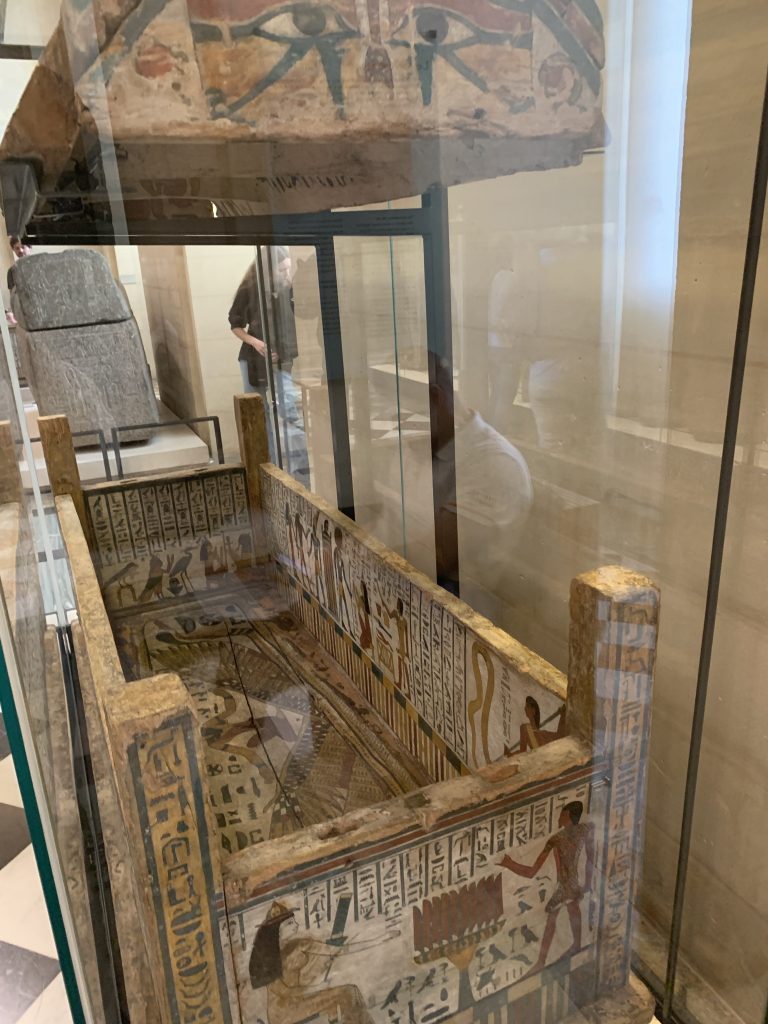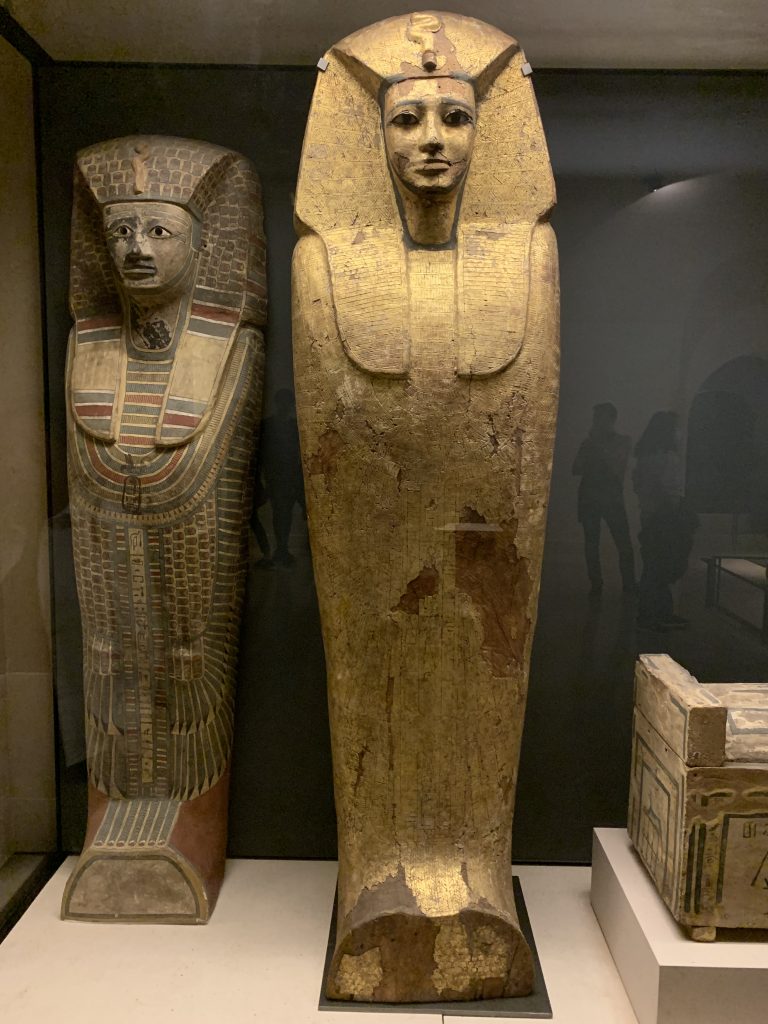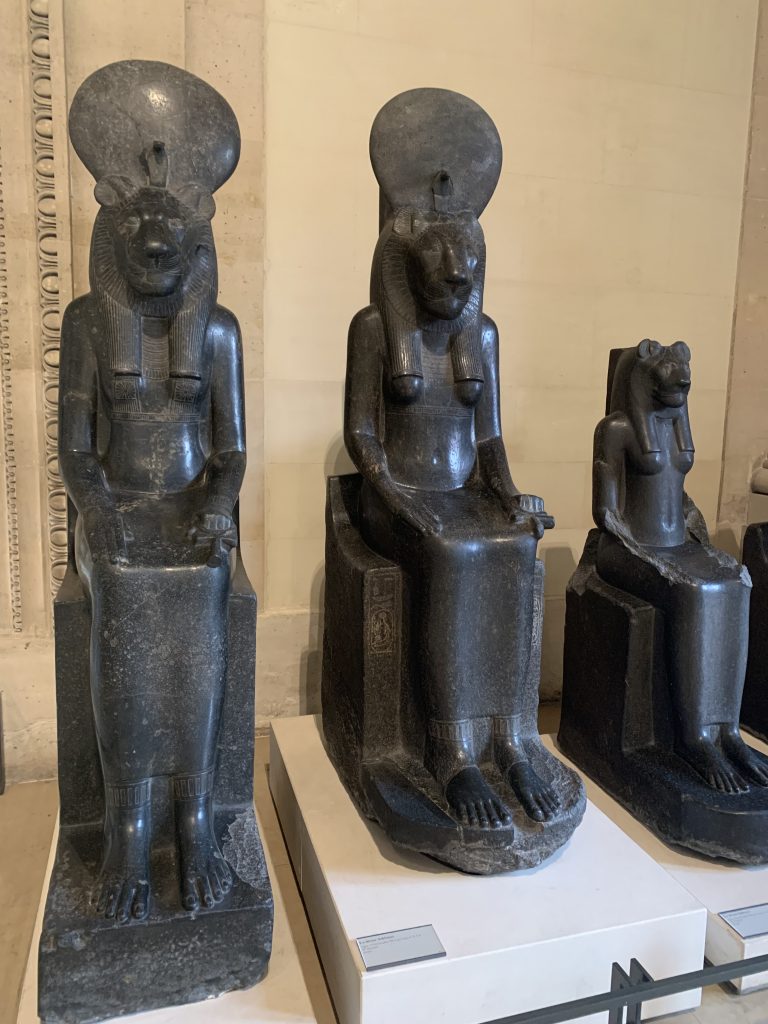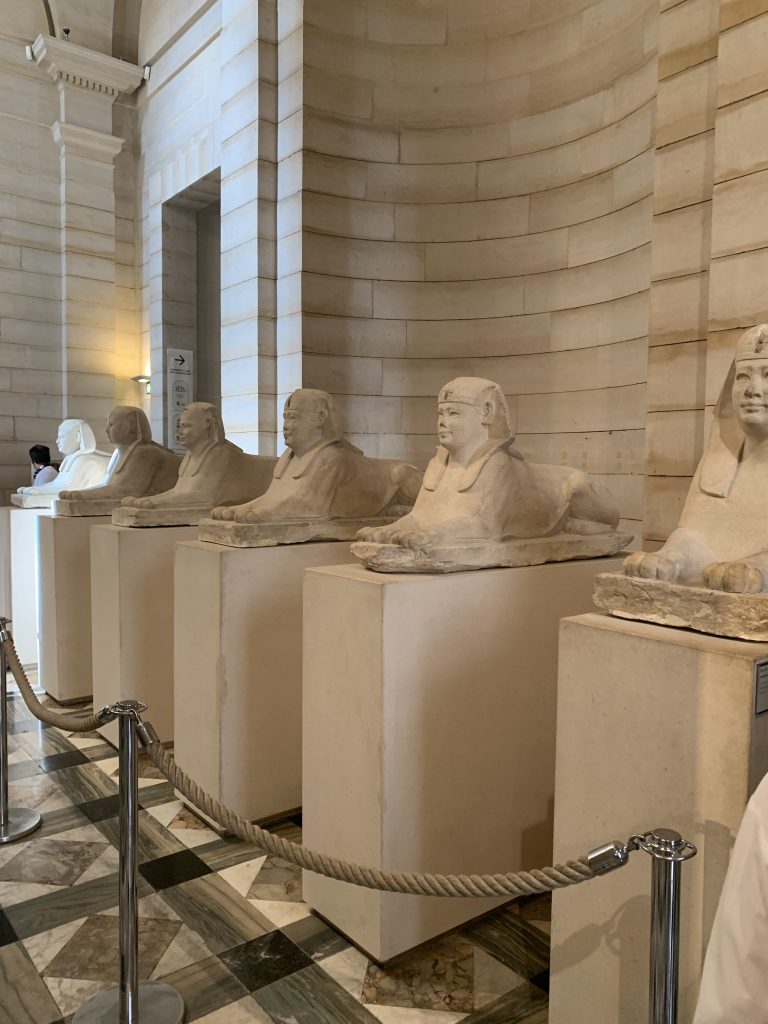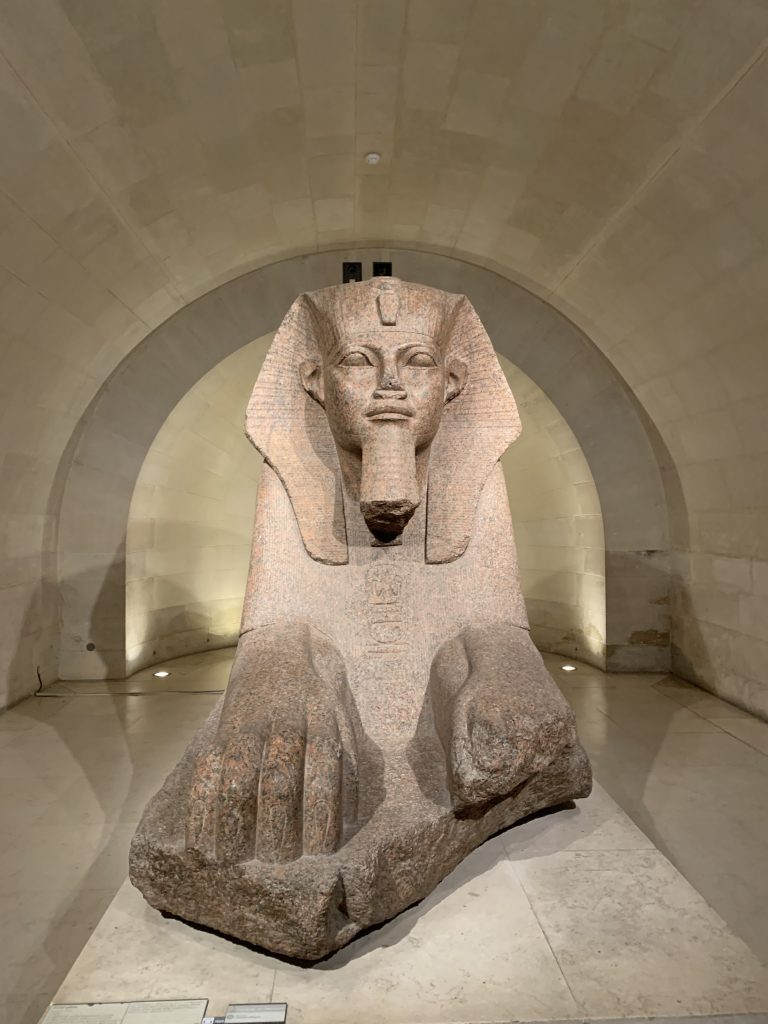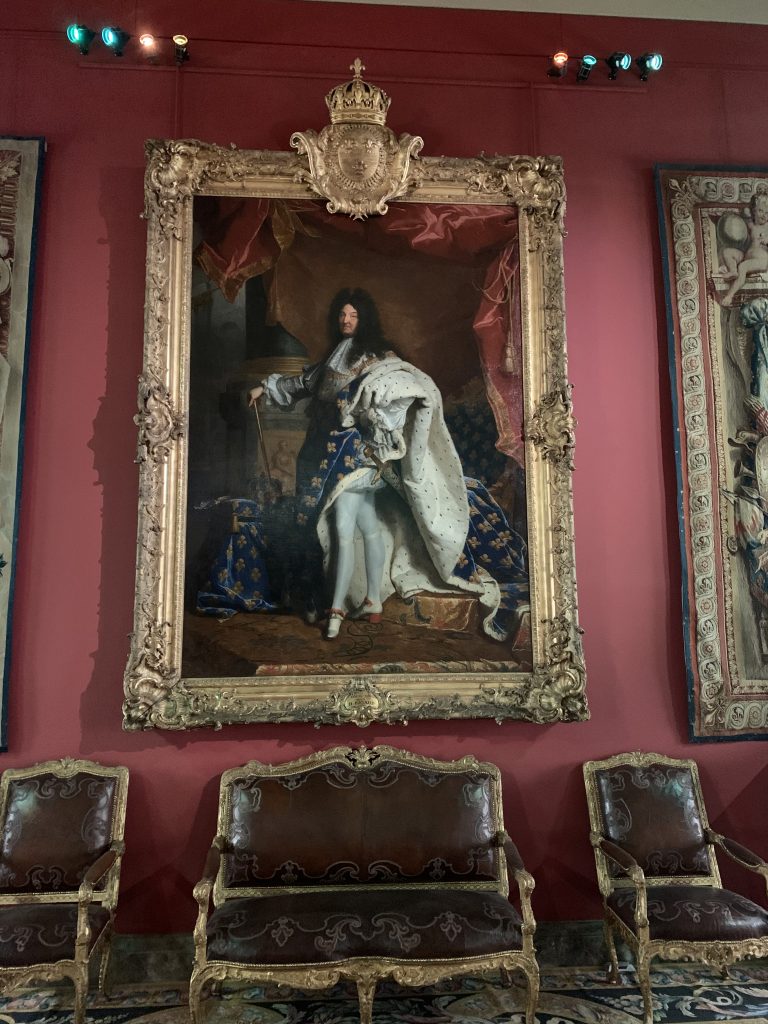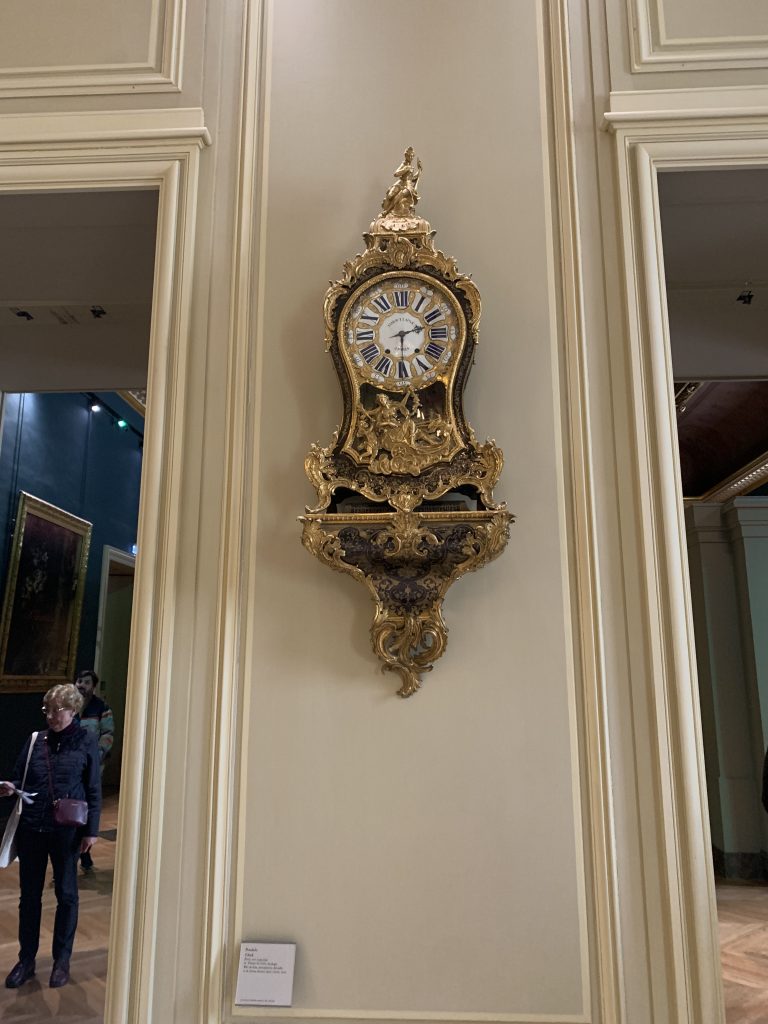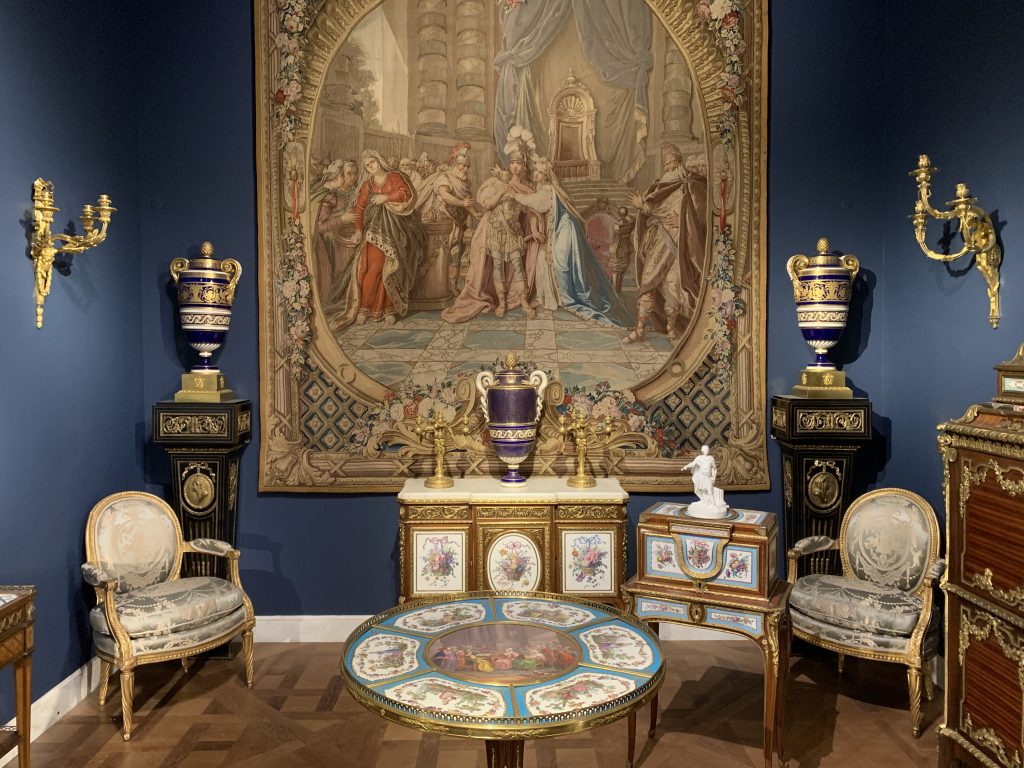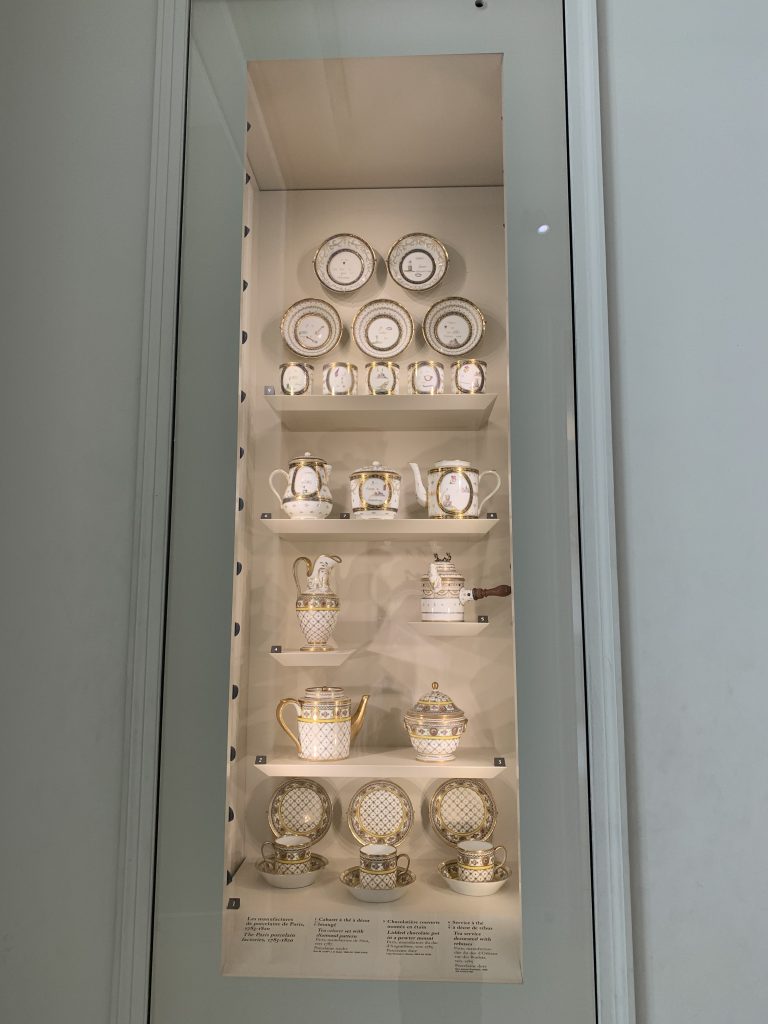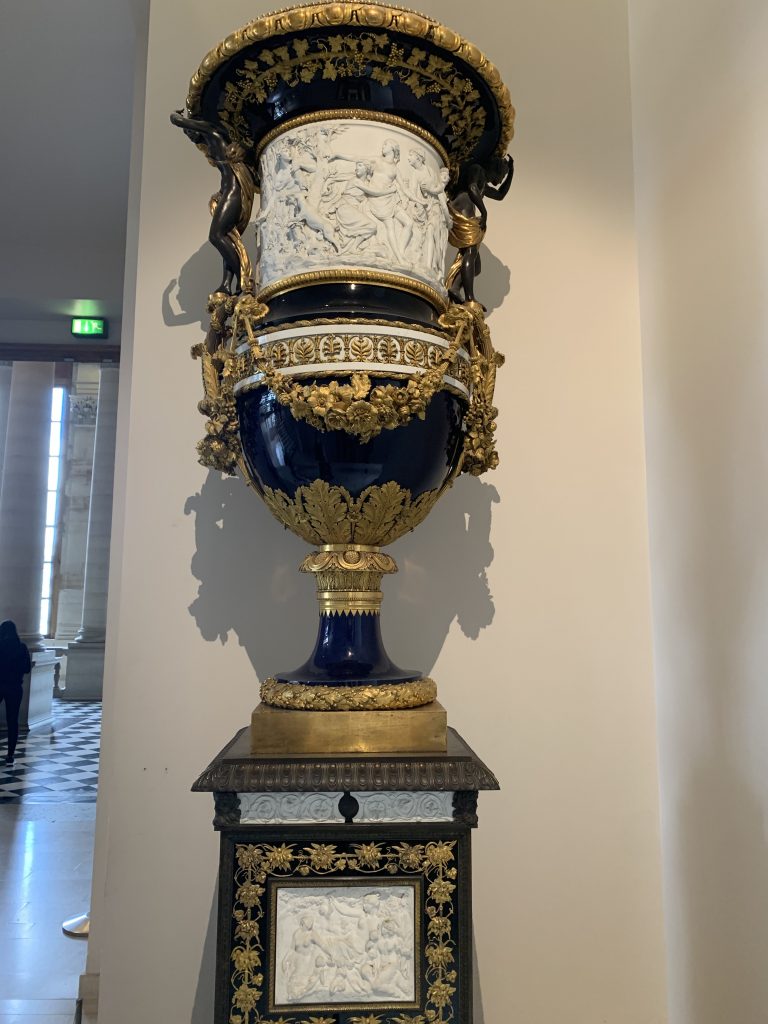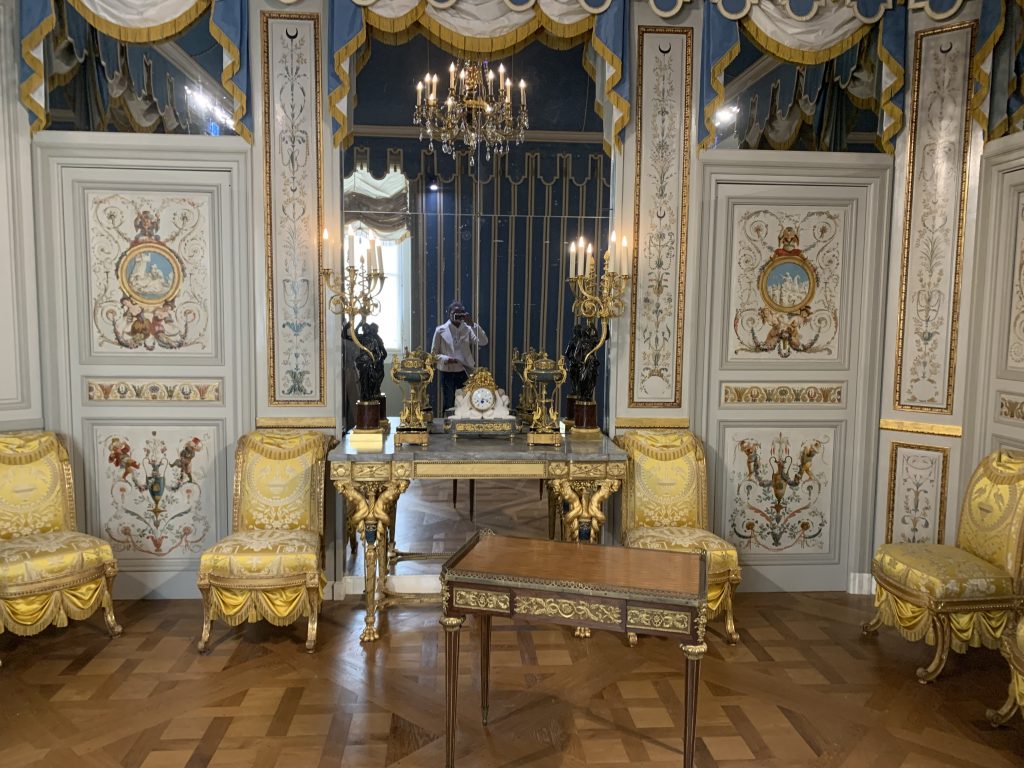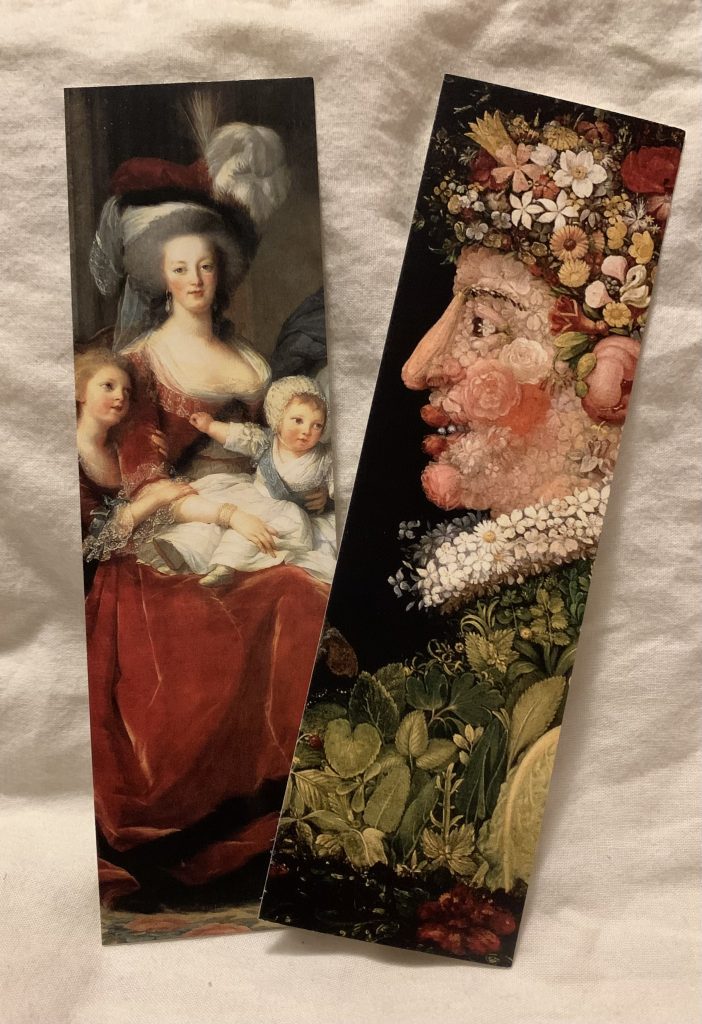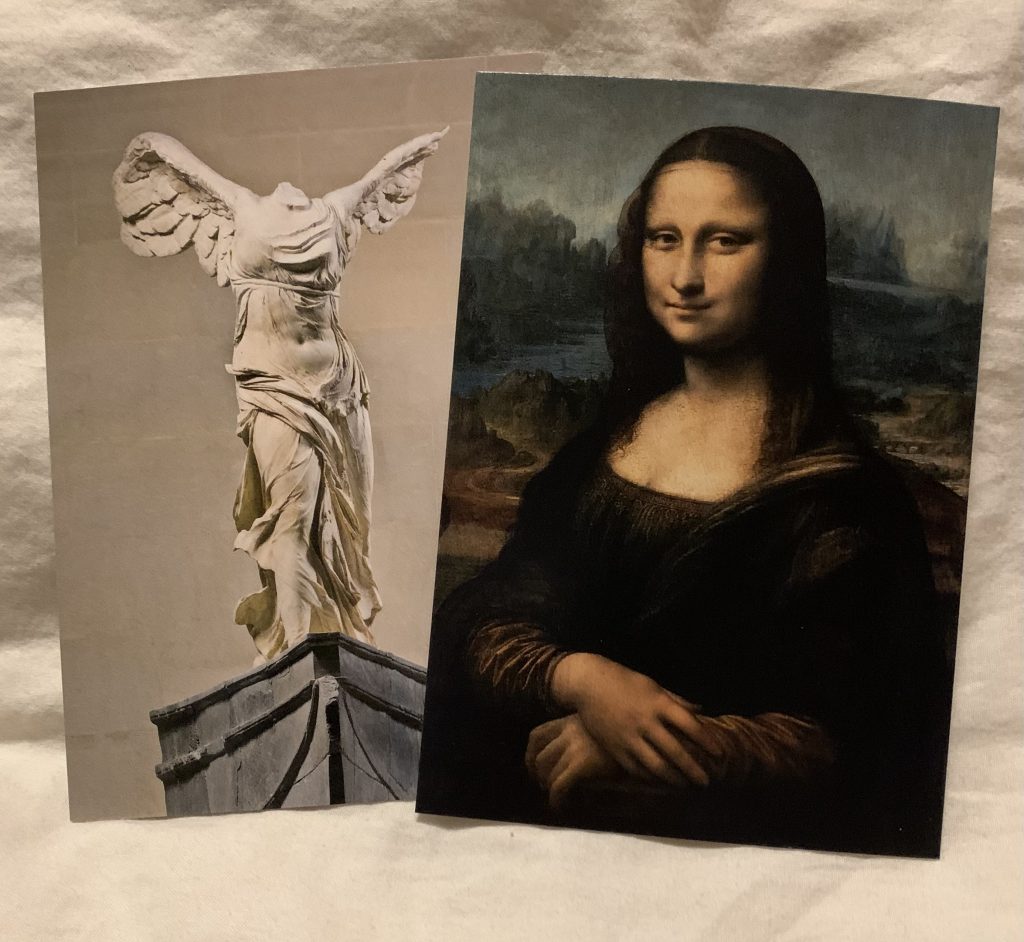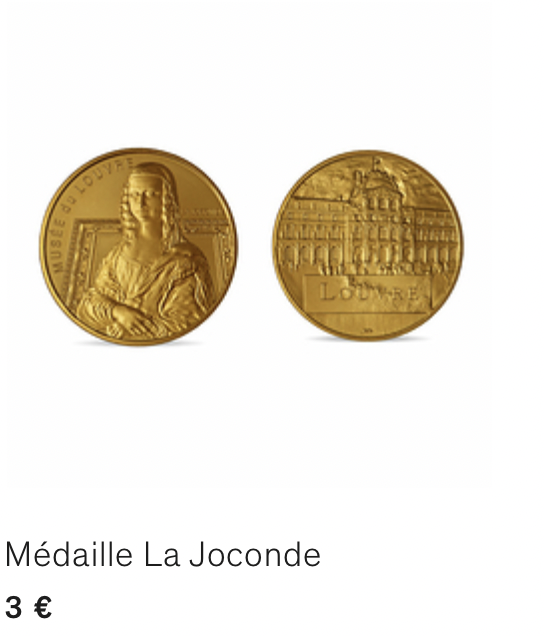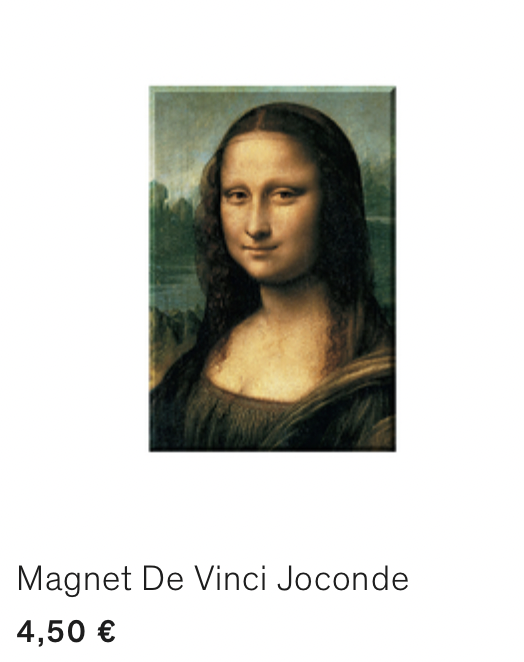Going to the Louvre
To access the museum using the subway, you can use the 1 (stop Palais Royal), 7 (stop Musée du Louvre) and 14 (stop Pyramide) lines. Several bus lines are also available; they are the following: 21, 27, 39, 67, 68, 69, 72, 74, 85 et 95.
When it comes to visiting by car, a parking lot is available at 1 avenue Général-Lemonnier and is open from 7am to 11pm. This parking lot is to be accessed by the commercial gallery of the Carrousel du Louvre.
Schedule
• Monday / Wednesday / Thursday / Saturday / Sunday: 9am-6pm
• Friday: 9am-9:45pm
• Tuesday: closed
Prices
• Online price : €17
• On site price : €15 (subject to availability)
• Visitors younger than 18 / younger than 26 and living in a country from European Economic Area (EEA) : free but an ID have to be provided
Other free entry conditions
• Students from following schools: École du Louvre, Institut National du Patrimoine, École Nationale des Chartes, École Nationale des Beaux Arts de Paris
• Job seekers on presentation of a proof of entitlement dated from the last year or by indicating a validity period
• People on income support on presentation of a proof of entitlement dated from the last year or indicating a validity period
• Disable visitors and person accompanying them
The Pyramid
The main entrance is on The Pyramid for several reasons. First of all it is the most accessible entrance : it allows the visitors to have access to the Louvre wether they already have their tickets or not and it allows an easy access for disabled visitors and parents with strollers for their child.
The second reason probably is the one considered by most of the visitors. The Pyramid is so tightly attached to the image of the museum that everyone wants their photo in it and seize the opportunity of going through the structure if presented to them.
Louvre esplanade
Photograph of the Louvre esplanade taken by Marjorie Eclar.
Inside the Pyramid
Photograph of the inside of the Pyramid taken by Marjorie Eclar.
By the way, did you know that the Pyramid has been build way after the museum itself? Indeed, its construction was a part of the « Grand Louvre » project carried by president François Mitterand in 1981 as an effort to modernise the palace and extend the museum. It led to two things: the transformation of the Richelieu aisle (which was devoted to the Department of Finances up until then) and the construction of the said pyramid. However, like another great French monument that became a symbol, the construction of the pyramid caused a lot of controversies.
The chosen architect (the MIT graduate Ieoh Meg Pei) isn’t convincing to many even though he is the one who built many buildings and museums in the United States and in Canada like the Everson Museum of Art of Syracuse, the Commerce Court West of Toronto or the John F. Kennedy Presidential Library and Museum of Boston. Moreover, once the blueprints were made public, many believed that the project was too modern for the classical style worn by the Louvre. The structure made of glass, steel and aluminum was found too fragile and too difficult to maintain (no pieces has ever needed to be changed thirty years after the construction of the pyramid) and the construction deadlines were deemed too short when the budget allocated to the project is deemed too high. None of these controversies stopped the project though and construction was given a green light in 1984. The pyramid opened to the public on April 1st, 1989.
Even though we talk a lot about the Louvre’s pyramid (and rightfully so as it is the third most popular work of art of the museum after the Jocund and the Venus de Milo), there are actually five pyramids. The first and biggest one is the pyramid thanks to which we can access to the museum. Its proportions are inspired by the Kheops pyramid in Egypt and as previously mentioned, it is made of glass, steel and aluminum. It is 21 meter high. There are three smaller replicas next to it whose location has been chosen for them to be light wells. Finally, the fifth one is the inverted pyramid that we can see in the Carrousel du Louvre. It is made of the same materials as the main pyramid and is 7 meter high.
The opening of the pyramid was an absolute success that surprised everyone, including the architect. The construction of the pyramid was planned for a crowd estimated between three and five million visitors a year. The popularity revival decided differently as the museum — and its pyramid — welcomed more and more visitors over the years and visits rose to eight million per year. It created some issues particularly the lengthening of the entrance and ticket counters queues as well as a rise of noise pollution and disorientation issues. The Louvre thus decided to launch project « Pyramid » that ended in 2016 and contributed to the reorganisation of the accesses and entry lobby. All the effort was worthwhile since in 2018, the museum welcomed ten million visitors which is a historical record for an art museum.
The history of the Louvre
However, before being a museum adored by Parisians and tourists alike, the Louvre has lived many lives. It has been a fortification, a castle which was used to hold captives, it sheltered royal families and even bore witness to ideological fights until the arrival of the Academic and the creation of an artwork repertoire including paintings, sculptures, etc.
The Louvre's birth
The Louvre fortification was created in 1187 after a request made by Philip Augustus, a monarch know to be authoritarian and pious, who reigned on the French kingdom from 1180 to 1223. According to a document from the monarchy’s budget, it was finished in 1202-1203. The building had a military function: its goal was to check on the enemies who could arrive by the Seine, especially English kings who might arrive from Normandy by navigating on the river. The Louvre was built during a period when defensive castles were built as a way to strengthen the king’s authority. Paris was already the economic, religious and political heart of the kingdom, its protection was thus necessary.
« Augustus’ Louvre is based on an almost rectangular base: it is 72 meters on 78, is made of 10 towers and an impressive 32 meter high donjon built above a several meter deep ditch. You can access the donjon thanks to a drawbridge. On the outside, the only two entrances are turned towards the city and guarded by two castellums which also have drawbridges. […] On the inside of the courtyard are two abodes, one to the South and the other to the East, the latest being more robust as it is more exposed to attacks. […] »
Vivien RICHARD
Transforming the Louvre
During its life as a palace, the Louvre hosted several monarchs and has been the center of many changes. First thanks to Charles V (1364-1380) who transformed the building by adding a brand new surrounding wall on the right bank of Paris, going hand in hand with the enlargement of this part of the capital city. The sovereign also asked for a new entrance to be added thus creating an access to the royal garden. He also asked for the addition of patio doors in an effort to bring more light to the building. Finally, he ornamented the North facade with a spiral staircase.
With the arrival of François I (1515-1547), the fort leaves its medieval clothes to start wearing the pomp worthy of the Renaissance that the monarch loved so much. François I’s program involves the end of donjon, the entrance of the Seine side is condemned and large statues are built to be put in front of the Saint Louis room. The monarch’s son leads the renovation works and it’s his widow, Catherine of Medicis, that will give a breath of fresh air to the place by conducting the building of a new palace out of the town in a vast domain that is also made of a garden and that will be known the « Tuileries ».
As for Henry IV (1589-1610), he wants to « base the domination of the Bourbons » and wishes to add character to the Louvre as a part of his plan. He decides to annex the Tuileries to his home and later on want to link the Louvre and the Tuileries with a big art gallery and create a way bigger central courtyard. This project known as the Grand Dessein will come to a conclusion under the reign of Napoleon III who used to live in the Tuileries (Vivien Richard). However, this change was short-lived as the Tuileries destroyed in a fire launched by the Communards in 1871 and the renovation project was abandoned after the death of the architect, the famous Eugène Viollet-le-Duc. The ruins were finally destroyed in 1883, which will give its current layout to the Louvre that will stay untouched until the Grand Louvre project led by François Mitterand that we mentioned earlier.
The Louvre, a cultural power
As we learned, the Louvre had a political power throughout its life but its cultural power also grew little by little, becoming the reason why it is still known to this day.
« During Charles V reign, a King’s Library is installed. By ‘library’ we mean an ensemble of collections made of course of many volumes — the king had 900 — but also various collections of curiosities and craft objects »
Vivien RICHARD
Chief of the history department in the Louvre
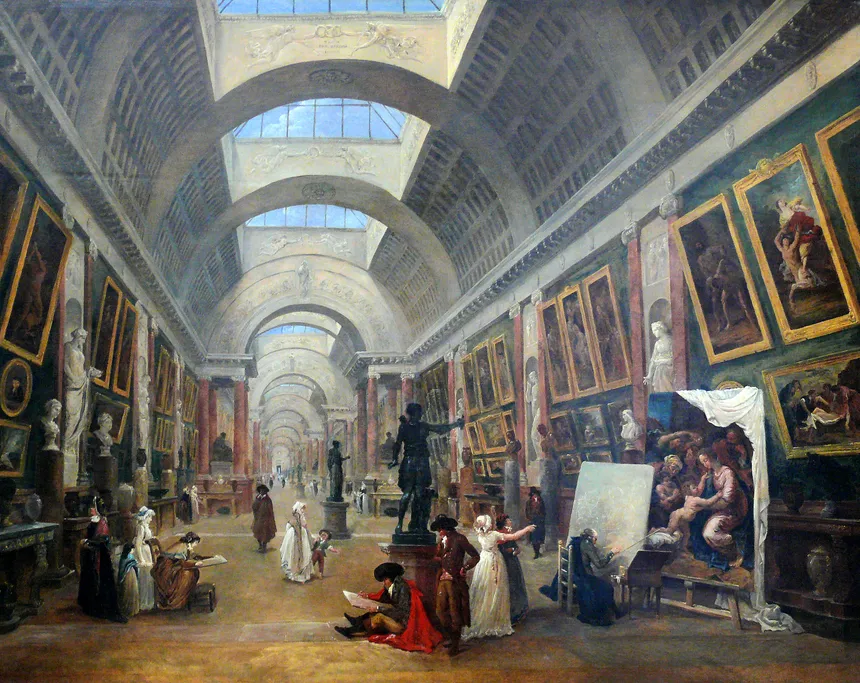
This place that is so tightly attached to the cultural strength of the France and a go-to place in Paris wasn’t always well received by artists. From the 17th century onwards, it has been in the center of mocking by anonymous writers who will create violent pamphlets about the cultural salons of the Louvre, literary for the most part. In 1606, Henry IV decides to invite artists to the Grande Galerie which is used as a room for his collection. Little shops were created and artistic creations are more and more abundant. The Cariatides room, ornamented by four women sculpted by Jean Goujon, becomes the privileged witness of the king’s receptions. In October 1658, Molière is one of the guests invited to a reception and will play for the first time in front of the sovereign of the time, Louis XIV. In the second half of the 17th century up until the end of the 18th century, the kings prefer living in Versailles. This gives to the Academicians an opportunity to settle in the palace. The Academy of Science move in the king’s quarters while the Academy of Sculpture and Painting exhibited the work of its members in the Salon Carré. However, political and cultural powers have continued to live together for a long time as the Department of Finances was the last government entity to leave the Louvre in 1989. The Louvre began its life as a museum from 1725 onwards when the salons that were reserved to the Academicians up until then opened their doors to the regular public. A repertoire of works of art start to emerge. In 1793, the Convention gets rid of the Academies et remplaces them with the Commune générales arts dans the museum opens to the public under the name « Museum Central des Arts ».
My visit to the Louvre
Arrival in the museum
I chose to visit the Louvre because it was a goal of mine for a very long time and it was on my bucket list. Moreover, I had many opportunities to go to the Tuileries Garden and to see the famous pyramid from afar but I never wandered inside de building. October being the my birthday month, I told myself that it would be e good opportunity to be a part of the 9 million visitors expected to pace up and down.
The visit starts on the -1 level where we can already meet some works of art. I started my visit by the small room called the Cabinet des dessins et des estampes in which we can discover drawing gear. It allows the visitors to dive into the world of the artistic creation and to not only see the artworks through the eyes of the artist by also through the materials that were used.
Ancient Greece
After this icebreaker, I went to the ground floor and I dived into the world of Antiquity by starting by Greece and then Egypt. I was impressed by the multitude of statues of the room. I knew that that there would be a lot of statues but I didn’t think that I would be find so many and that I would find them so pretty. I then went towards one of the sculptures featured on the map: The Venus of Milo. This statue represents the goddess Venus et was discovered in 1820 on the Greek island of Milo without her arms. Like many people, I discovered her on photo but seeing her in person enabled me admire her traits with and the marble work of Alexander of Antioche more precisely. I then was pleased to discover many different versions of goddess Athena. As a child, I found her incredibly inspiring because of her strength and courage and a part of me is now happy that I got to met her almost in person. Finally, I got to discover the beautiful Victoire de Samothrace leading through a staircase. I did’t expect to see her but there she was, on her pedestal, greeting the visitors.
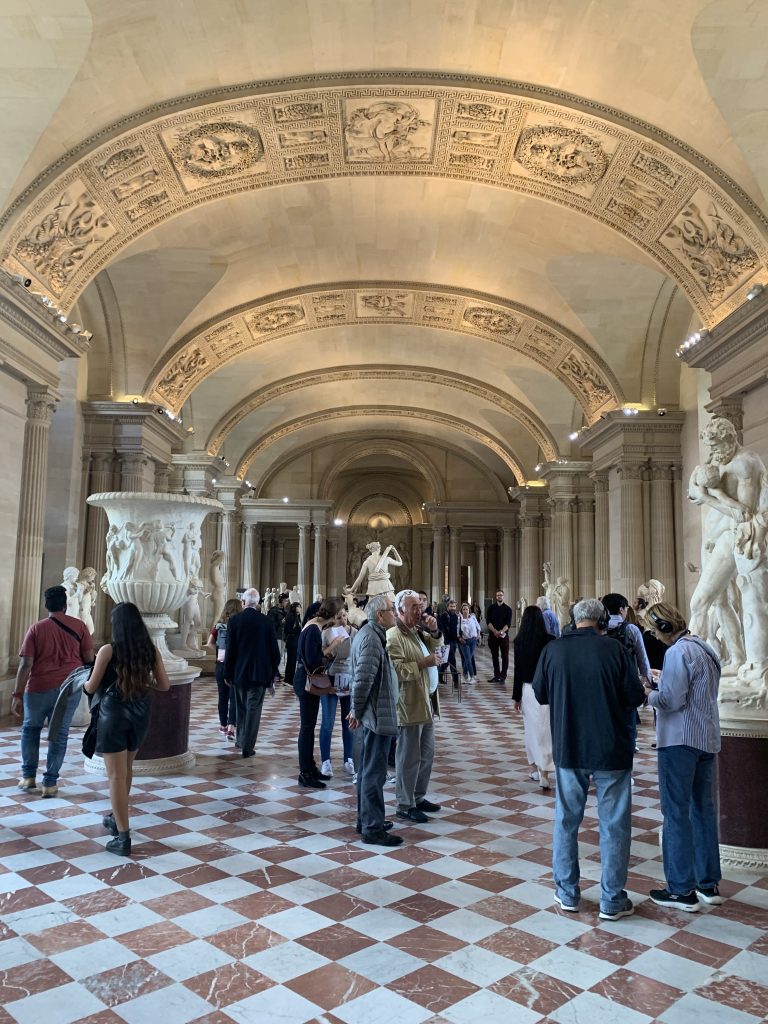
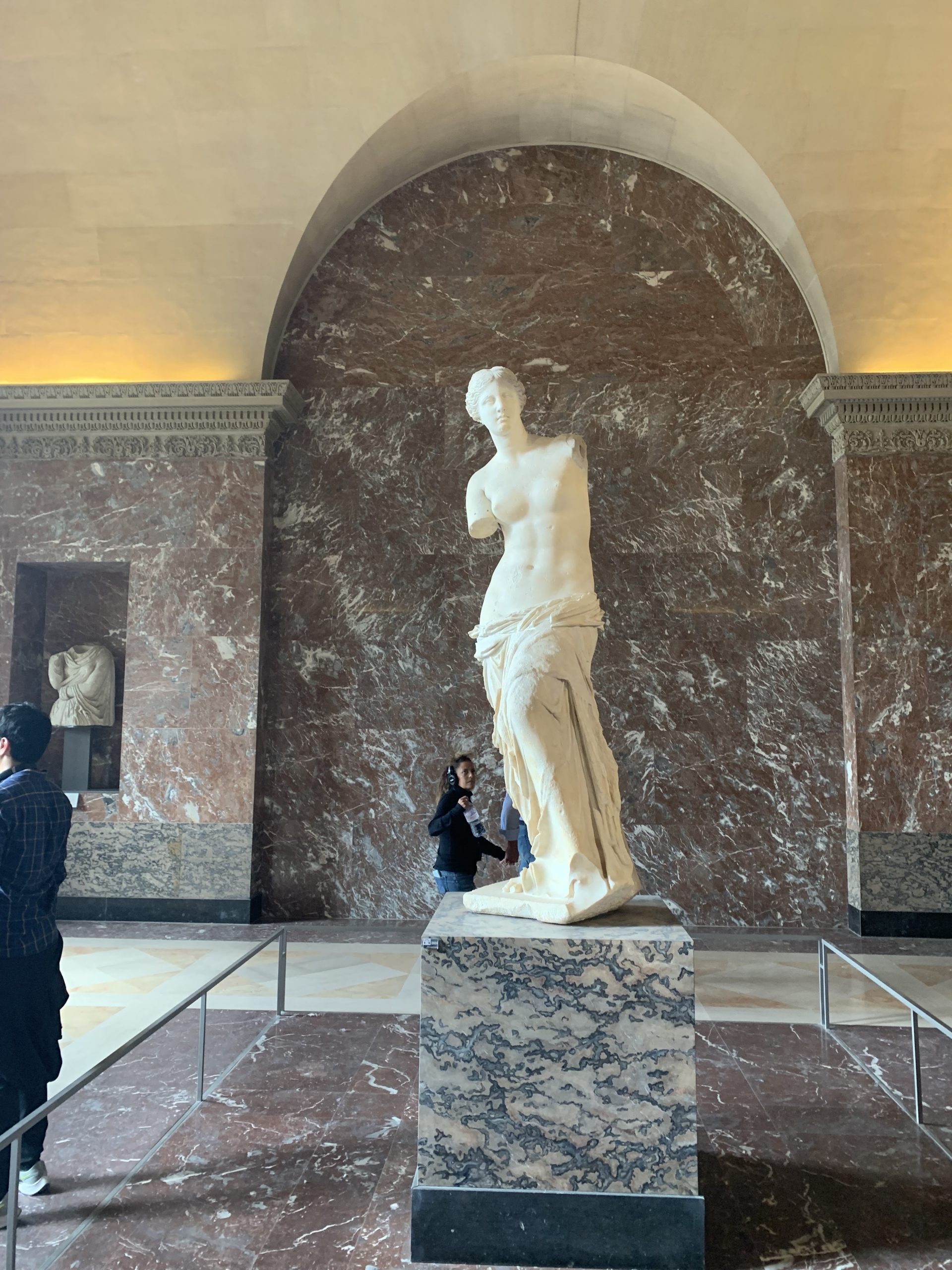
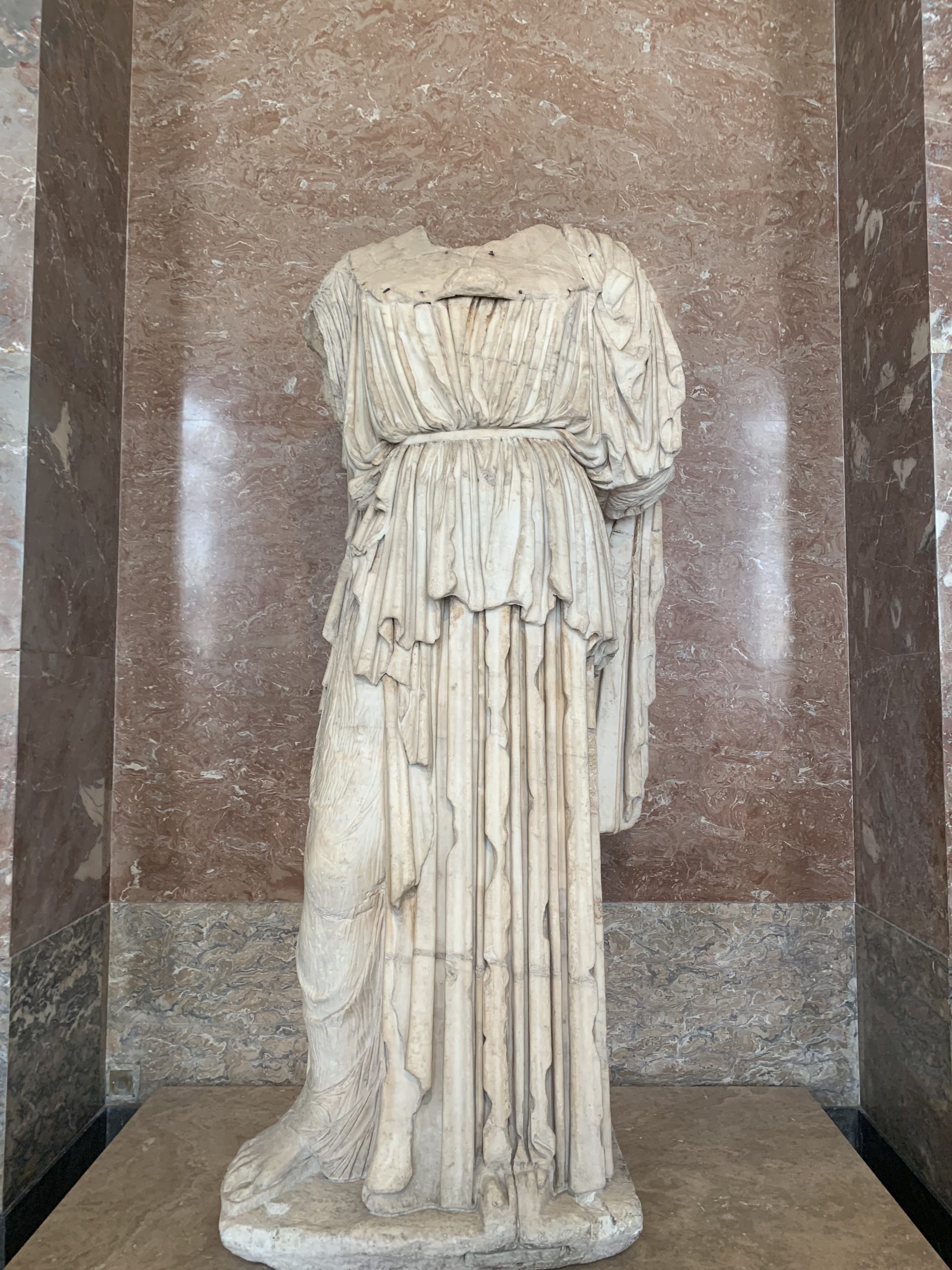
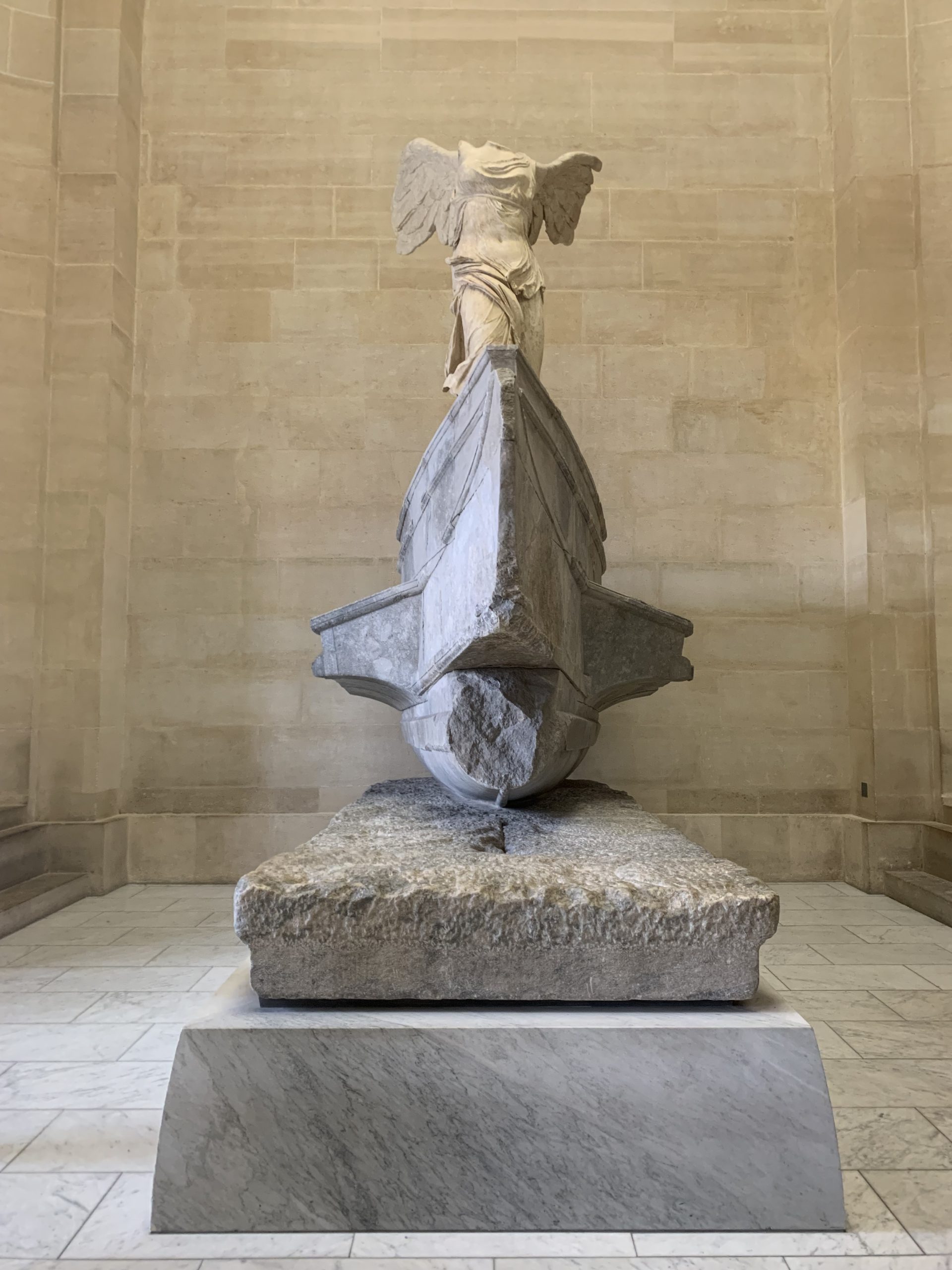
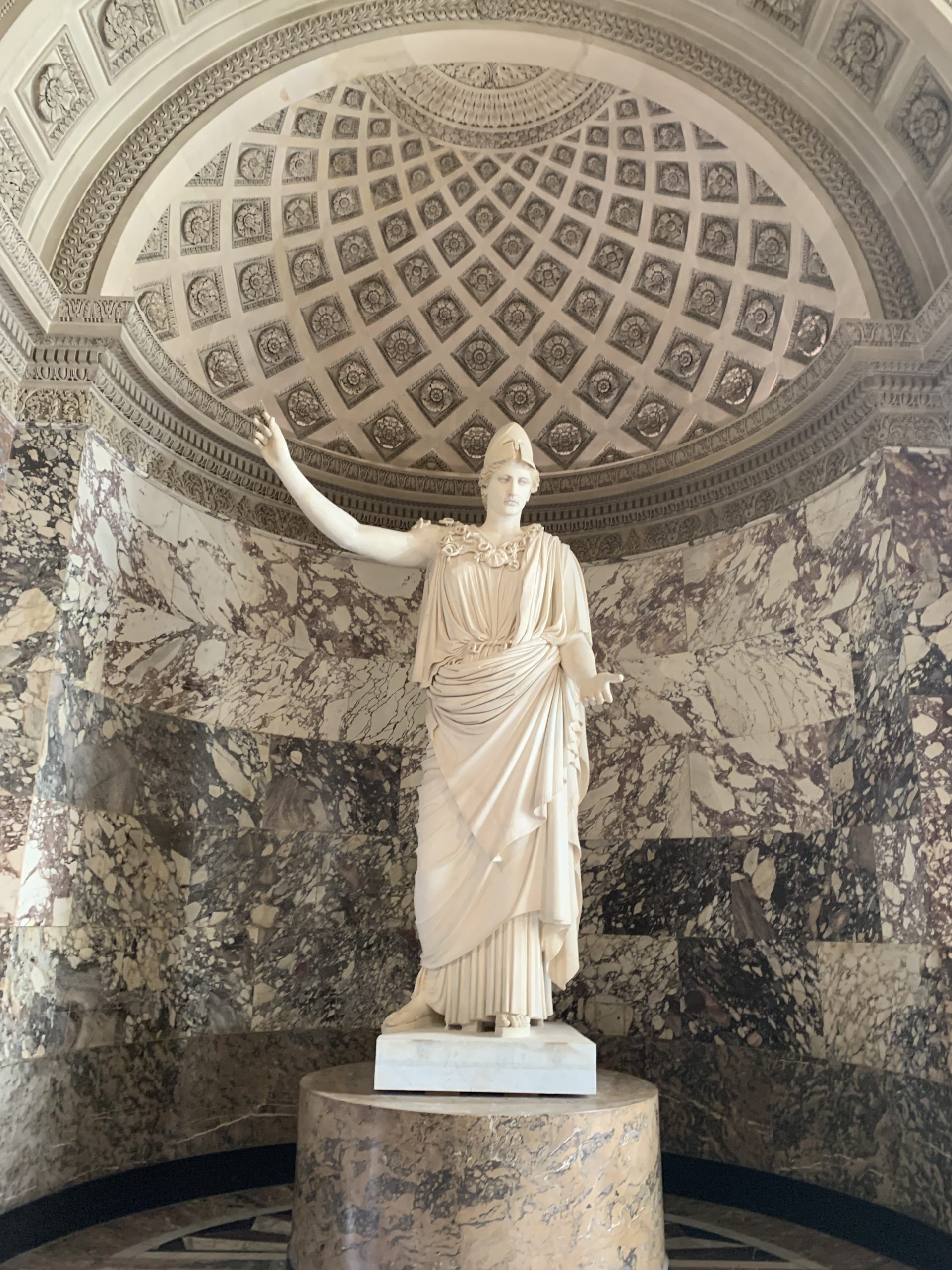
Ancient Egypt
I knew beforehand that the Louvre had a big collection of artefacts from that time period which is the reason why I was expecting a lot in terms of diversity from visiting the rooms dedicated to Egypt. Once I arrived, I got to admire a wide variety of sarcophagus and everyday life objects from that period.
We are welcomed in by the Sphinx of Tanis, impressive and majestic all alone in his room. There is also a lot of smaller sphinxes and small statues that we can take the time to admire. As the visit goes by, we discover the vast collection of sarcophaguses owned by the museum. Thanks to the Louvre, we have the opportunity to discover sarcophaguses under several forms: made of stone, made of wood, open ones and closed ones. The closed ones enable us to focus on the exterior details whereas the open ones let us the inside details of sarcophaguses.
Finally, there are many displayed objects like amphoras or jewellery. We tend to think of Egypt as that great civilisation that has an amazing and rich history however seeing the little everyday life objects enables us to get closer to the people who lived during that time period.
The royal jewels
After wandering in the Ancient world, I wanted to see more contemporary artworks by going the first floor.
I started by going to the Gallery d’Apollon. It is the place where you can see the royal legacy. We can see a lot of portraits representing people who were different eras of the French royal family. Even more impressive, we can appreciate the French crown jewels. I was very surprised by that because weirdly enough I didn’t think that they were preserved and to me there was even less chance for them to be preserved in a museum for all to see.
Apollo Gallery
Apollo Gallery, room 705, the Louvre, Paris © Marjorie Eclar
Crown Jewels of the French crown
Crown jewels of the French crown, displayed at the Louvre © Marjorie Eclar
Crown jewels of the French crown
Crown jewels of the French crown, displayed at the Louvre © Marjorie Eclar
A painter's world
This part of the museum was way more crowded than the others because some of the most unmissable artworks are displayed in theses rooms. You thus need to prepare yourself to be in contact with a lot more people, which can quickly become complicated if you’re agoraphobic or don’t feel at ease in large crowds. If it is your case, I really recommend that you start your visit by theses rooms (marked in red on the map and on the first floor) or that you arrive early to feel conformable during your time in the museum.
And for that matter, visiting the museum outside of the peak period enables you to enjoy everything the museum as to offer on the walls as well as on the ceiling.
Staircase
Staircase, The Louvre, Paris © Marjorie Eclar
Ceiling
Ceiling, The Louvre, Paris © Marjorie Eclar
It’s in that context that I discovered the famous Jocund. I wasn’t sure that I could / wanted to see her because of the crowd but I grinned and bore it (you have to queue to see the painting up close) and soon I was able to see Mona Lisa’s charismatic traits for myself. I have to admit I asked myself if her smile wasn’t made for us, us who patiently waited to see her with our own eyes.
I then took the time to go and see two paintings that to me are as part of the myth as the Jocund: The raft of the medusa by Théodore Géricault and Liberty leading the people by Eugène Delacroix. I studied those paintings in art history and history classes and they were always so fascinating to me. That’s why I was really happy to get to see them in person even though their size make them really impressive paintings and hard to admire on the first look.
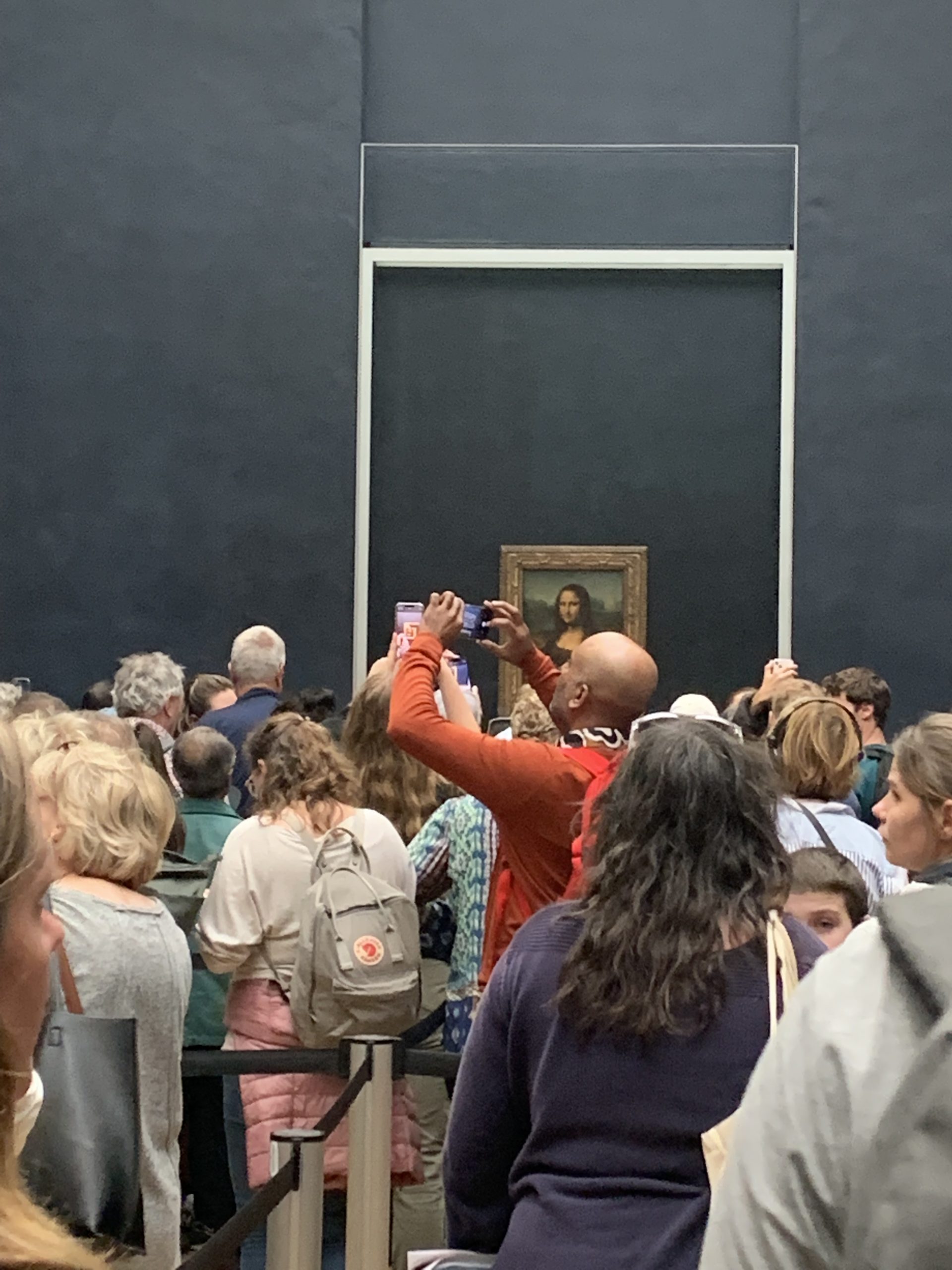
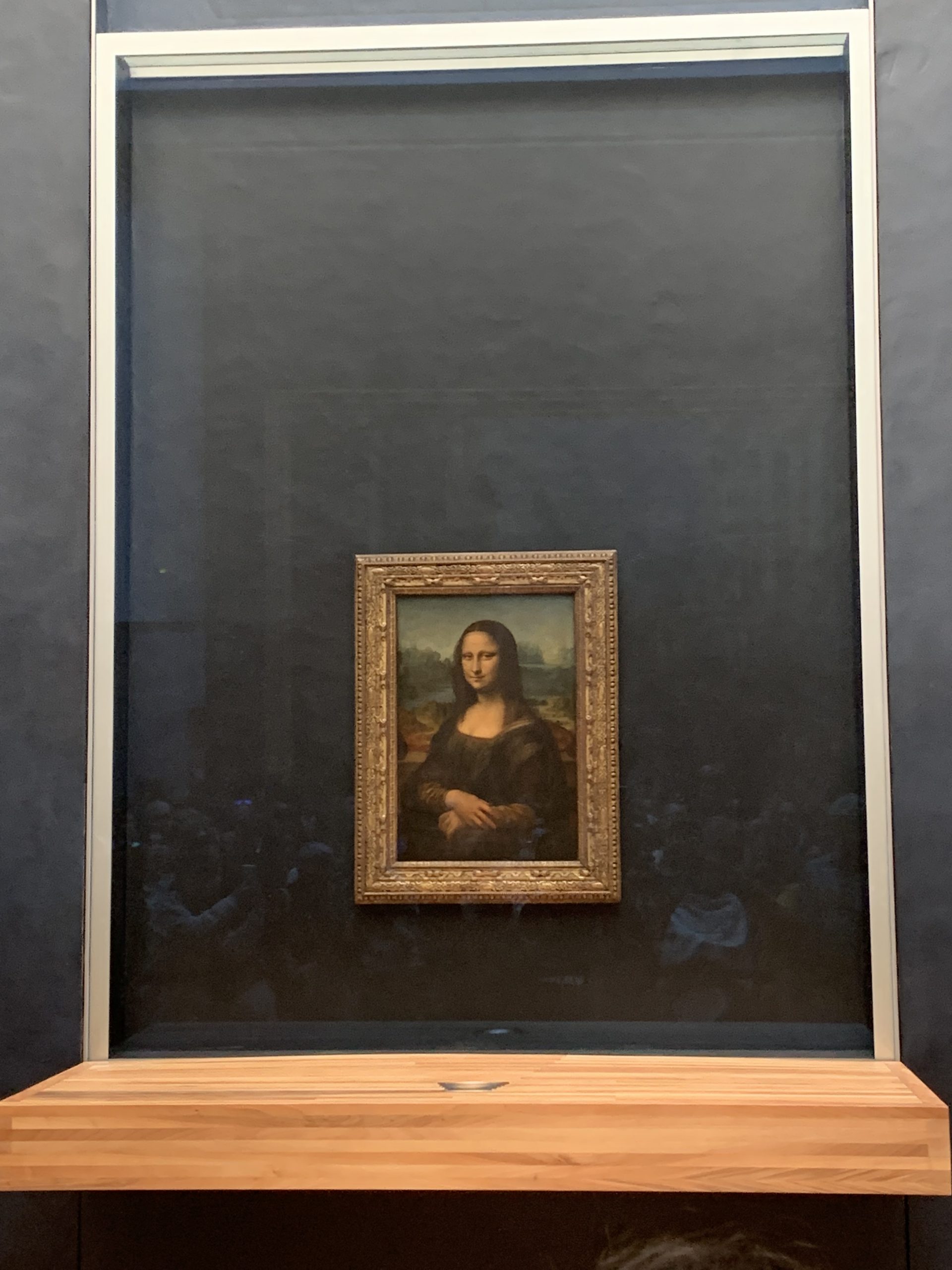
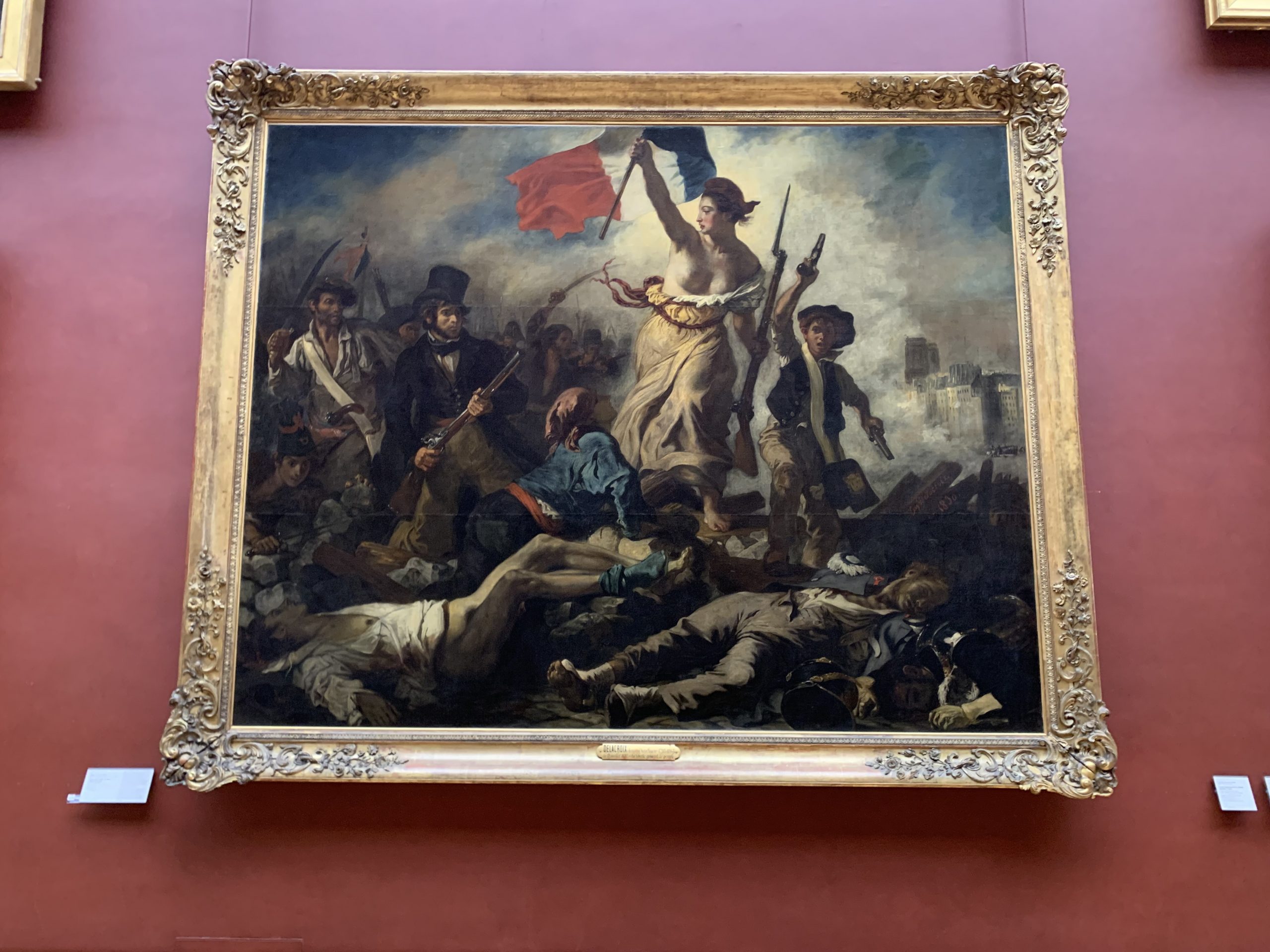
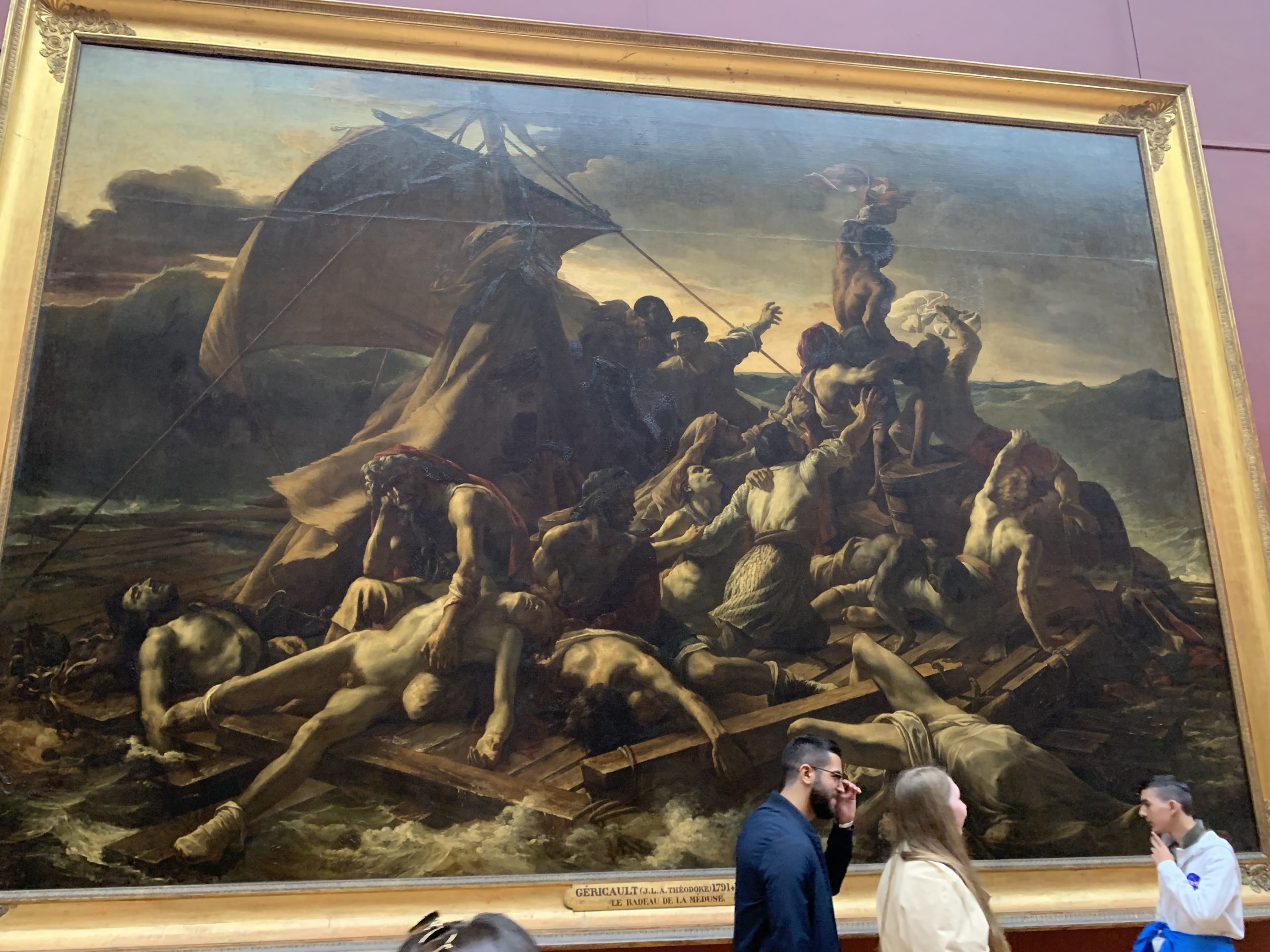
Decorative arts
I finished my visit by going to the decorative arts part which gathers objects and furniture that enable us to imagine the art de vivre à la française (the French way of life) under several reigns, from Louis XIV to Louis XVI. Let’s remember that the Louvre hosted many monarchs over a long period of time. It thus makes sense to find objects dedicated to them in other places than just the Galerie Apollon we mentioned earlier.
King Louis XIV also known as the Sun King is obviously the starting point of this part of the museum as he was known for his love for pretty and refined objects. This is the reason why we can see many objects that belonged to him. The most impressive one according to me is this beautiful gemstones box that would be our modern day jewellery boxes. This box is impressive for its shape as well as for ornaments on it. We can only imagine the rarity of the gems stored in that box when we look at it.
The museum also gives us the opportunity to discover spaces decorated as they would have been given the time period. One of those spaces is the Turkish cabinet of the count of Artois, office in which Louis XVI’s brother worked.
There is also a lot of smaller objects displayed everywhere ready to be found. They are grouped by era, materials and theme. The walls are not neglected as every place capable of displaying an object are utilised.
Buying souvenirs from the Louvre
Once the visit is over, the museum give us several means to purchase a souvenir, first thanks to a shop placed into room 701 of the museum and indicated on the map as a gift and second thanks to another shop this time placed in the Carousel.
I shopped in both because some items were available in the Carousel but not in the museum. As a result, I bought the Louvre edition of the famous Monopoly game, a Jocund magnet for my fridge, a collectible medal as well as two postcards and bookmarks that I couldn’t find the reference for but here they are.

